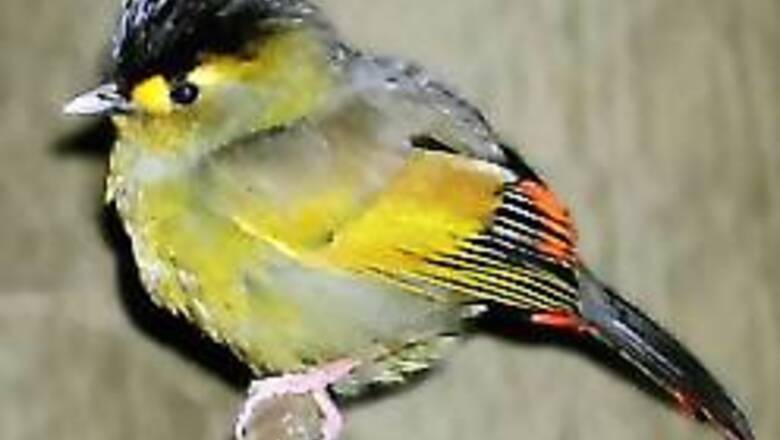
views
New Delhi; A striking multi-coloured bird has been discovered in northeast, making it the first ornithological find in the country in more than half a century, experts said on Tuesday.
The Bugun Liocichla, scientifically known as Liocichla bugunorum, a kind of babbler, was discovered in May at the Eaglenest Wildlife Sanctuary in of Arunachal Pradesh, bordering China.
The bird, with olive and golden-yellow plumage, a black cap and flame-tipped wings, is 20 cm in length and named after the Bugun tribespeople who live on the sanctuary's periphery.
Professional astronomer and keen birdwatcher, Ramana Athreya, who discovered the bird said that although two Bugun Liocichlas were caught and examined at the sanctuary, both were released and no scientific specimen collected.
"We thought the bird was just too rare for one to be killed (for scientific study)," said Ramana.
"With today's modern technology, we could gather all the information we needed to confirm it as a new species. We took feathers and photographs, and recorded the bird's song,” he added.
Athreya wrote a paper, which was circulated among foreign and Indian experts including Pamela C Rasmussen, Assistant Curator of mammalogy and ornithology at Michigan State University, and author of The Ripley Guide of Birds of South Asia.
PAGE_BREAK
The experts verified the Bugun Liocichlas as a new species and the International Commission on Zoological Nomenclature then approved the name.
"The discovery of a new bird is really special," said Aasheesh Pittie, Editor of Indian Birds bi-monthly journal where the description of the Bugun liocichla was published.
"But when it's a stunning species with no geographically close relatives, and in a part of the world where bird collectors have sampled birds for more than a century, it's nothing short of miraculous,” Pittie added.
The last new bird species to be discovered in mainland India was the Rusty-throated "Mishmi" Wren-babbler Spelaeornis badeigularis in Arunachal Pradesh in 1948. The known population of the Bugun Liocichla consists of only 14, including three breeding pairs. Ramana first sighted the bird at the sanctuary in 1995 but it was more than a decade before he saw it again.
"Even then I knew it was something very special," he said. "The only bird that looks remotely like it is the Emei Shan liocichla, which is known from only a few mountains in central China, more than 1,000-km from Eaglenest."
Ramana failed to spot the birds again until May 2006 when he eventually succeeded in trapping two birds with nets. International bird conservation groups are elated.
"A priority now is to find out if other populations of this remarkable species exist elsewhere and what its habitat requirements are, so that appropriate conservation measures can be put in place," said Nigel Collar of Birdlife International.


















Comments
0 comment